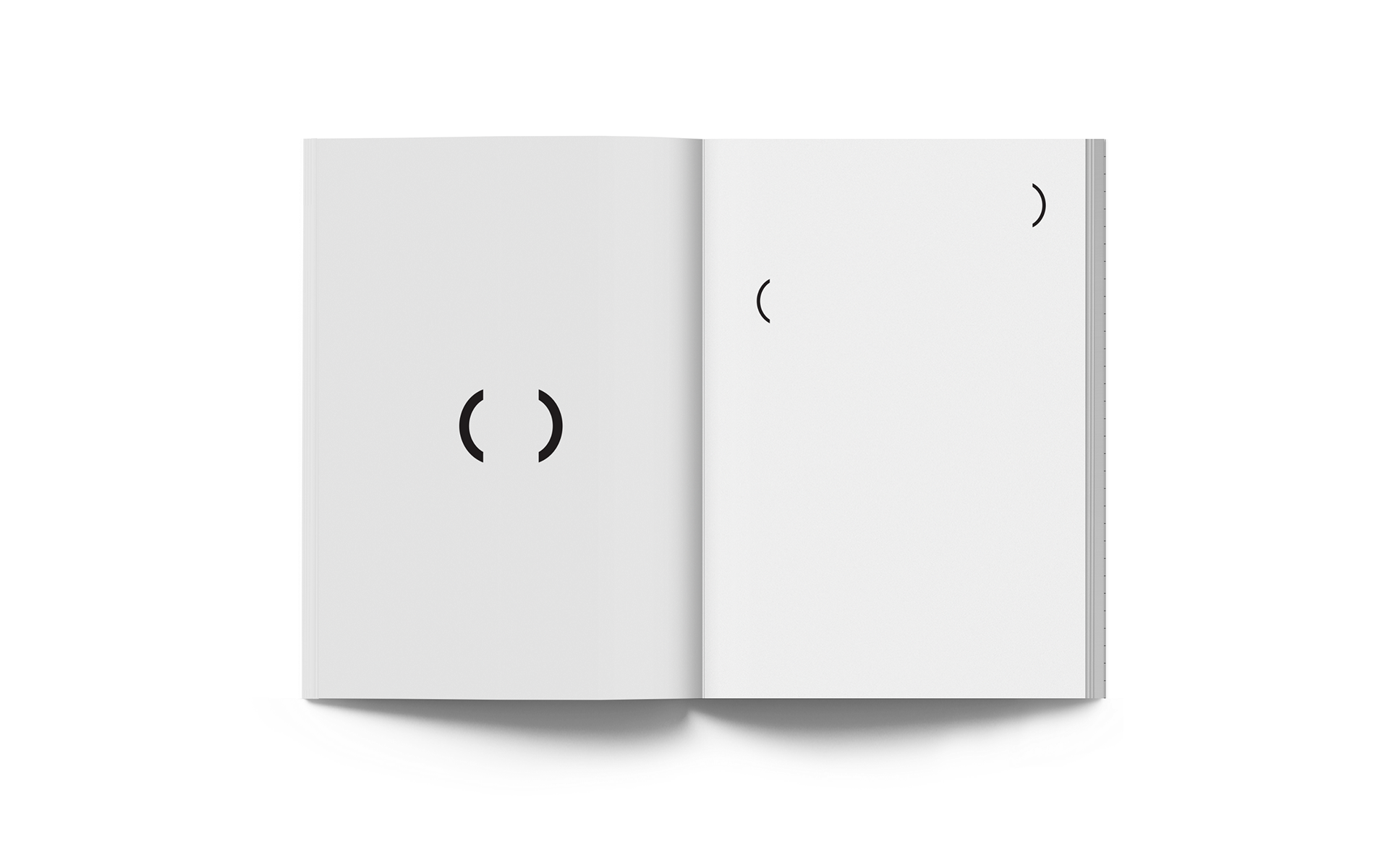( ), 2018
( ), 2018, book, Dimensions Variable, Mixed media (printed book, white objects), 200*600*850
( ):
Used to insert helpful words,
To describe movement, context, or a state,
To indicate content,
To translate a word into another language,
Or to conceal or remove something.
Whatever you place inside this bracket—
what meaning will it carry?
( ):
무언가를 보탤 때,
움직임이나 상황, 상태를 설명할 때,
내용을 표시할 때,
다른 언어로 의미를 전환할 때,
혹은 무언가를 지우거나 숨길 때 사용됩니다.
이 괄호 안에 당신이 넣은 그 무엇,
그건 어떤 의미를 가지게 될까요?
-
Professional artists are often seen as those who give inspiration to others—but what inspires the artists themselves?
While objects and moments can spark creativity, I believe that spectators themselves—those who engage with artworks—are also a vital source of inspiration.
Artists typically present their works at a nearly completed stage.
Spectators, therefore, encounter only the final results, rarely witnessing the chaotic and uncertain early phases of creation.
To my knowledge, few artists have ever deliberately shared the initial organizing stages of their process—the part that is often the most challenging and time-consuming.
This project is a gesture toward revealing that early stage.
On a table, I present a collection of symbolic objects that often trigger my own inspirations.
Up until now, I have drawn from these objects to offer ideas and direction to spectators.
But in this work, I reverse the dynamic: I ask, “What do these personal objects look like to you?”
To facilitate this exchange, I use a bracket ( ) as a conceptual tool.
Brackets, to me, are open spaces—places for annotation, revision, motion, silence, and suggestion.
They carry potential for both addition and erasure, and invite meaning without pressure.
Brackets are symbolic of possibility—both positive and negative—and of interaction between reader and writer, artist and audience.
This book contains various types and sizes of brackets.
Spectators are invited to fill them with words, thoughts, or sentences that come to mind when viewing the objects on the table.
Some brackets may hold ideas that deeply resonate with me, while others may offer suggestions I set aside.
No one, including myself, can predict which will be most valuable—or least.
After reading all the responses, I will begin a new project based entirely on what has been written.
This work is not only a portrait of who I am as an artist, but also an experiment in opening up the first step of creation to collective input.
-
예술가는 종종 타인에게 영감을 주는 존재로 여겨집니다.
그렇다면, 예술가 자신은 어디에서 영감을 얻을까요?
우리는 보통 ‘사물’이나 ‘순간’에서 그 답을 찾으려 하지만, 저는 작품을 마주하는 관객들 역시 예술가에게 중요한 영감의 원천이라고 생각합니다.
대부분의 예술가들은 완성에 가까운 작업을 관객에게 보여줍니다.
관객은 언제나 결과만을 마주할 뿐, 작업이 시작되는 혼란스럽고 불확실한 단계,
즉 ‘정리’의 과정을 거의 볼 수 없습니다.
저 역시 그 시기를 가장 오래 붙잡고 씨름하게 됩니다.
이번 프로젝트는 바로 그 초기 단계를 드러내는 시도입니다.
책상 위에는 제가 평소에 영감을 얻기 위해 자주 사용하는 상징적인 오브제들이 놓여 있습니다.
지금까지 저는 이 오브제들에서 떠오른 아이디어로 관객에게 메시지를 건네왔습니다.
하지만 이 작업에서는 방향을 반대로 전환합니다.
제가 묻고 싶은 질문은 이렇습니다.
“이 오브제들은 여러분에게 어떻게 보이나요?”
그 질문을 관객과 함께 나누기 위해, 저는 ‘괄호 ( )’를 개념적 도구로 사용합니다.
저에게 괄호는 주석을 달고, 움직임을 암시하고, 의미를 보류하거나 삭제하는, 다양한 가능성을 품은 열린 공간입니다.
괄호는 때로는 의미를 더하고, 때로는 지우며, 독자와 작가, 관객과 예술가 사이의 조용한 제안이 되기도 합니다.
이 책 안에는 다양한 형태와 크기의 괄호들이 담겨 있습니다.
관객은 책상 위 오브제들을 바라보며, 떠오르는 단어나 문장을 괄호 안에 자유롭게 채워 넣을 수 있습니다.
어떤 괄호는 저에게 진정한 울림을 줄 수도 있고, 어떤 것은 지나칠 수도 있습니다.
무엇이 남고, 무엇이 사라질지는 저 역시 예측할 수 없습니다.
저는 모든 괄호 안의 텍스트를 읽은 뒤, 그것들을 바탕으로 새로운 작업을 시작할 예정입니다.
이 작업은 저 자신을 드러내는 동시에, 창작의 첫 단계에 타인의 시선을 끌어들이는 실험이기도 합니다.






⇦ ( ) Book Final Execution